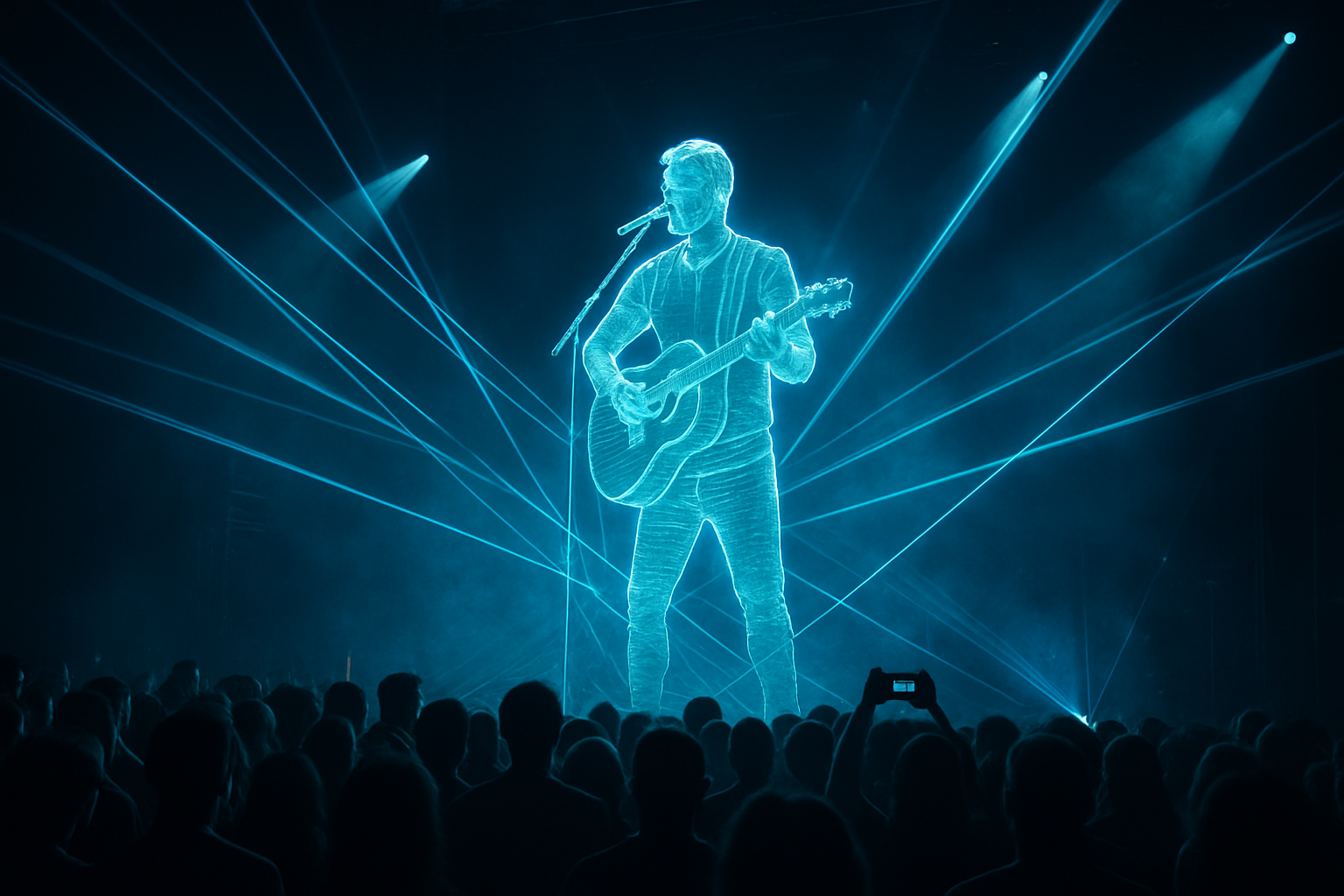Holographic Concerts: The Next Frontier in Live Music
In an era where technology continues to reshape our entertainment landscape, holographic concerts are emerging as a groundbreaking fusion of music and cutting-edge visual spectacle. This innovative approach to live performances is captivating audiences worldwide, blurring the lines between reality and digital artistry. As holographic technology advances, it's transforming the concert experience, offering new possibilities for both artists and fans alike. Let's delve into this fascinating phenomenon that's redefining the future of live music.

Technological Marvels Behind the Music
At the heart of holographic concerts lies a complex interplay of advanced technologies. High-definition projectors, motion capture systems, and sophisticated computer-generated imagery (CGI) work in harmony to create lifelike, three-dimensional representations of performers. The process involves meticulous attention to detail, from capturing the nuances of an artist’s movements to recreating their voice and stage presence. Recent advancements in real-time rendering and 5G connectivity have further enhanced the quality and responsiveness of these digital performances.
Bridging Time and Space
One of the most compelling aspects of holographic concerts is their ability to transcend physical and temporal limitations. This technology allows deceased artists to ‘perform’ alongside living musicians, creating unique collaborations that were previously impossible. Moreover, it enables artists to appear simultaneously in multiple locations, expanding their reach and connecting with fans across the globe. This aspect of holographic performances is reshaping tour logistics and opening up new possibilities for global concert experiences.
The Fan Experience Reimagined
For concertgoers, holographic shows offer a blend of nostalgia and futurism. Fans can experience the energy of a live performance combined with the visual spectacle of cutting-edge technology. These concerts often feature interactive elements, allowing audiences to engage with the holographic performers in ways that traditional concerts cannot match. The immersive nature of these events creates memorable experiences that blur the line between virtual and reality, challenging our perceptions of live entertainment.
Ethical Considerations and Industry Impact
As holographic concerts gain popularity, they also raise important ethical questions. The use of deceased artists’ likenesses has sparked debates about consent, legacy, and the nature of posthumous performances. Additionally, the technology’s impact on the live music industry is significant, potentially altering touring schedules, venue requirements, and even the role of backup musicians. These considerations are shaping ongoing discussions about the future of live music and the balance between technological innovation and artistic integrity.
The Future of Holographic Concerts
Looking ahead, the potential for holographic concerts seems boundless. As technology continues to evolve, we can expect even more realistic and interactive performances. The integration of artificial intelligence could lead to dynamic, responsive holographic artists capable of unique interactions with each audience. Furthermore, the convergence of holographic technology with virtual and augmented reality promises to create entirely new forms of musical experiences, potentially revolutionizing home entertainment and private concerts.
Challenges and Opportunities
Despite its promise, holographic concert technology faces several challenges. The high costs associated with producing these shows can be prohibitive for smaller artists or venues. There’s also the challenge of maintaining the emotional connection between performer and audience when the artist isn’t physically present. However, these hurdles also present opportunities for innovation in concert production, artist representation, and fan engagement strategies. As the technology becomes more accessible, it could democratize the concert experience, allowing emerging artists to reach wider audiences without the constraints of traditional touring.
Cultural Impact and Artistic Expression
Holographic concerts are not just changing how we experience music; they’re influencing artistic expression itself. Musicians and visual artists are collaborating to create performances that were previously unimaginable, pushing the boundaries of creativity. This fusion of music and visual technology is giving birth to new art forms and challenging our understanding of what constitutes a live performance. As artists explore these new possibilities, we’re likely to see a renaissance in concert design and musical storytelling.
In conclusion, holographic concerts represent a fascinating convergence of art, technology, and entertainment. As this technology continues to evolve, it promises to reshape the landscape of live music, offering new experiences for fans and new opportunities for artists. While challenges remain, the potential for innovation and creativity in this space is enormous. As we look to the future, holographic concerts stand as a testament to the ever-evolving nature of musical performance and our endless quest for new ways to connect through art.





